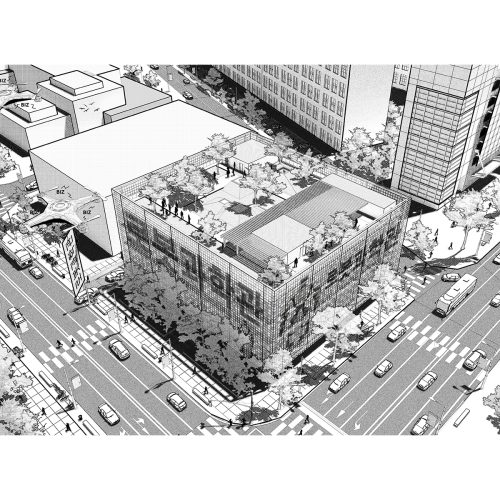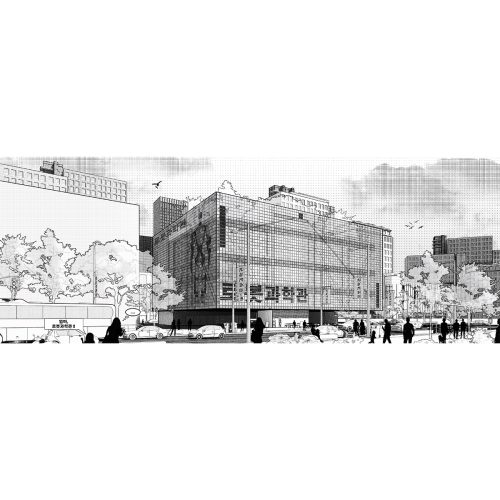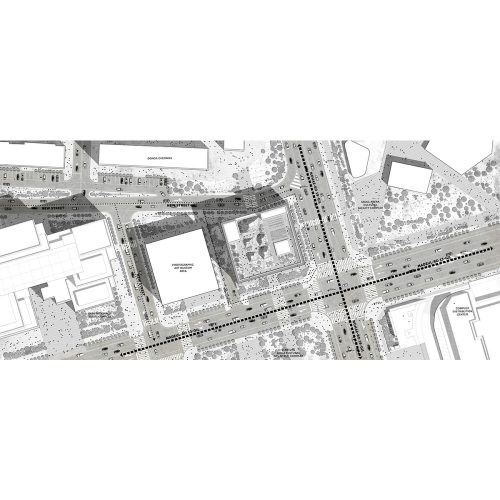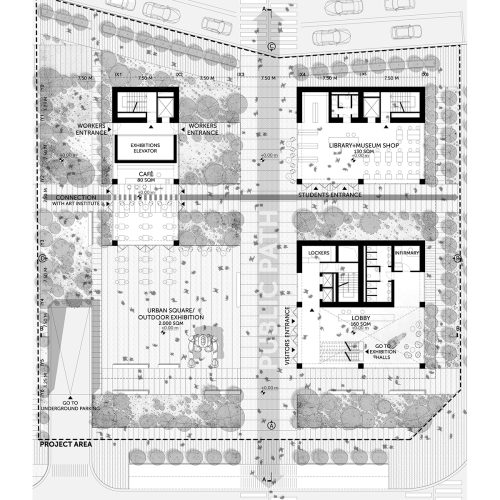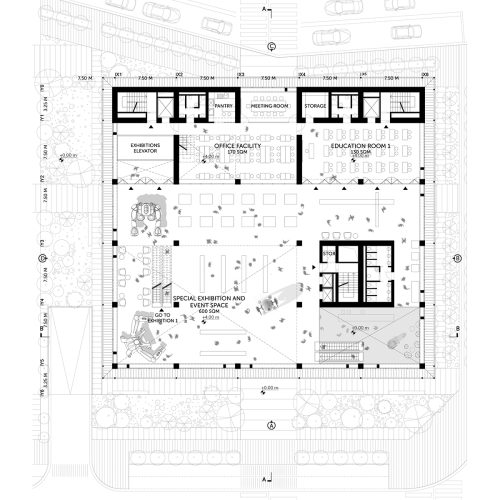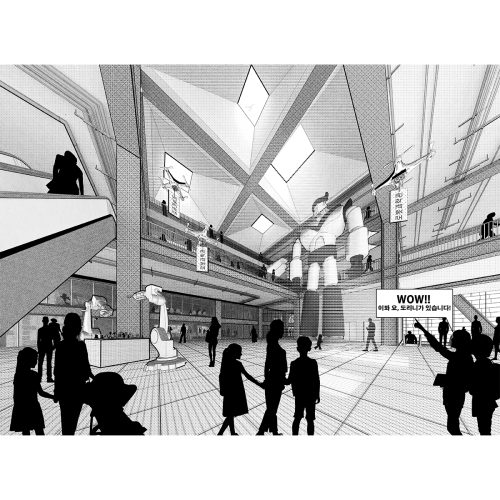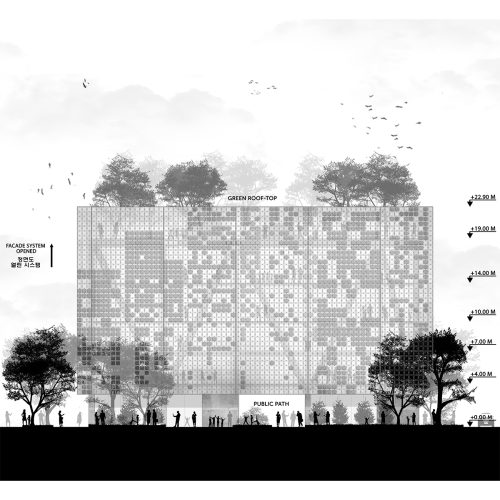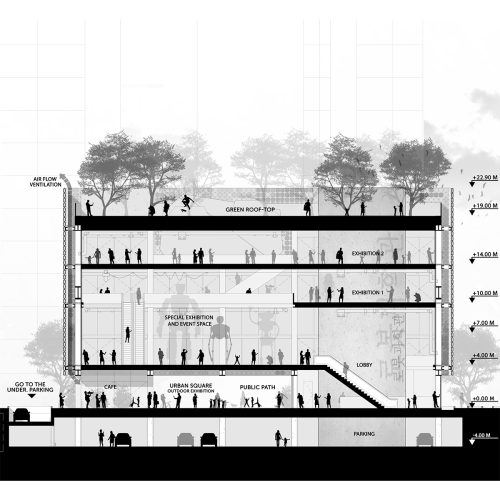- AWARD: 3rd Prize
- YEAR: 2019
- STATUS: unbuilt
- LOCATION: Seoul, South Korea
- TYPE: museum
- SURFACE: 6.000 sqm
- BUDGET: 14.700.000 €
- CLIENT: Seoul Metropolitan Government
- CREDITS: TARI Architects in collaboration with Erika Braun, Seung Eun Lee, Yamil Alejandro Ini
| A machine for expositive purposes |
Due to the strategic position of the project site (set in the centre of the City), the main idea is to ensure the total permeability of the ground floor, that would become the connecting area among the different pedestrian paths and urban axis that outline the surrounding cityscape. This will not only connect the new Robot Museum to the nearby main functions, but also it will create a new urban condenser that attracts visitors and residents, enhancing their socialization and sharing of experiences. To reach this goal, the design places the Museum spaces in a suspended element over this freely empty ground floor, placed on three volumes welcoming urban activities.
The building aims to represent itself as the robot world, besides simply welcoming exhibitions dedicated to this topic. As the robot was created to satisfy human needs, the building aims to do the same through the flexibility of its inner spaces and the ability to welcome and help the community.
Thanks to the suspended building, the ground floor is totally free, allowing the people to meet and socialize. To visit the museum for your own education, to enjoy exhibitions and performances during the special events, or simply to cross through and reach the surrounding buildings. It is a new piece of the city, connected with the surrounding context.
